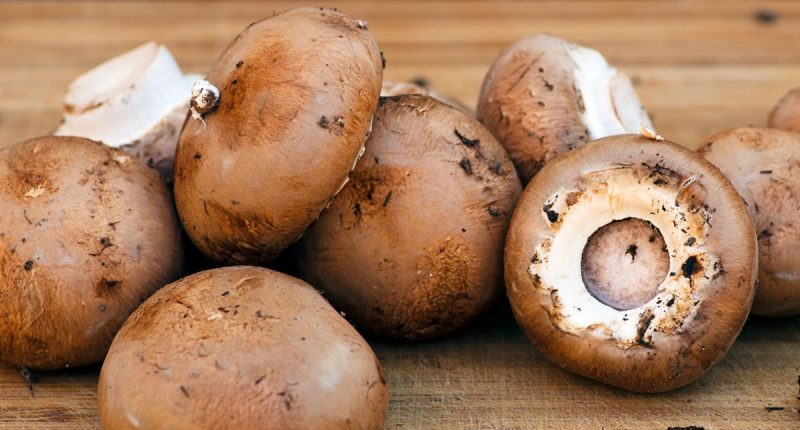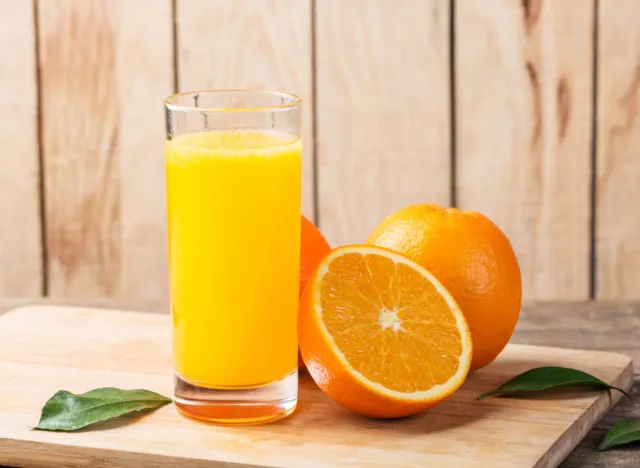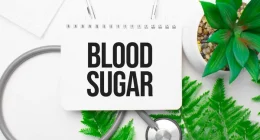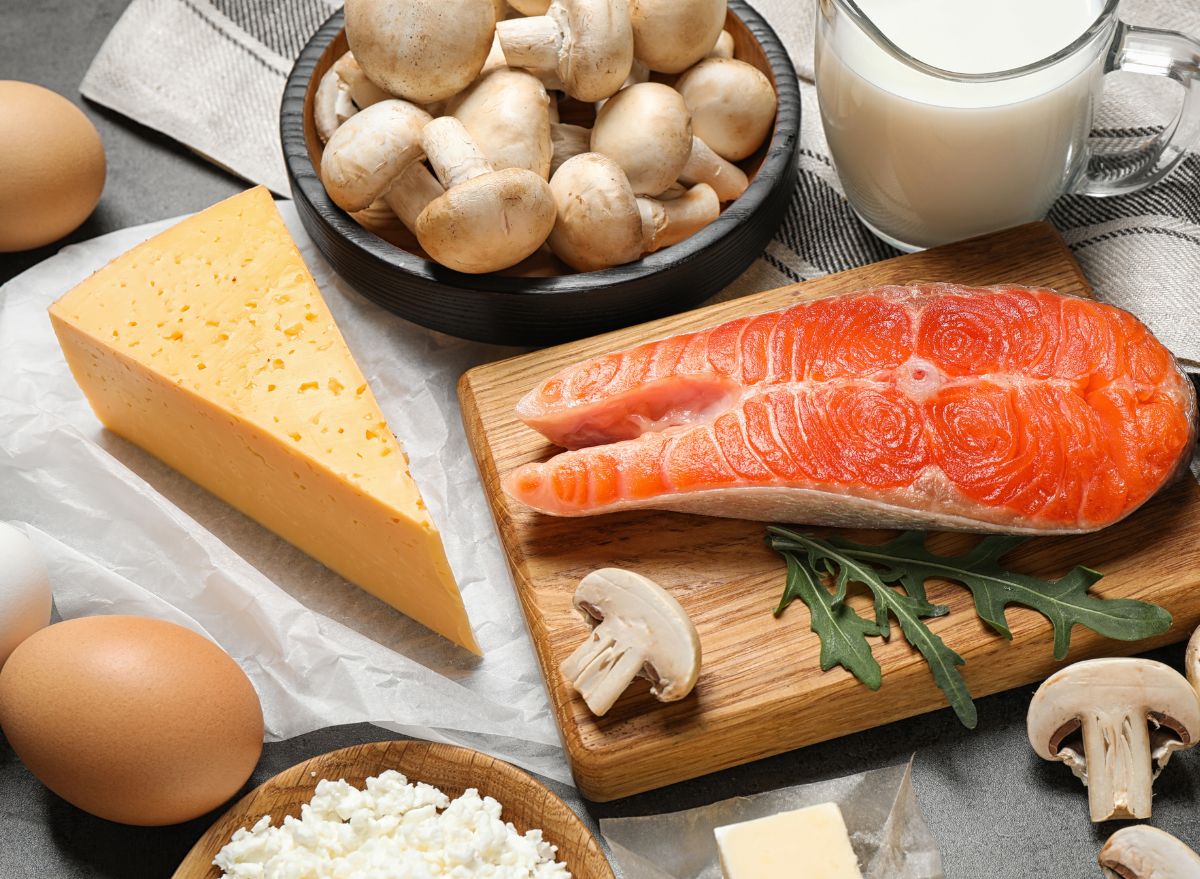
22 Best Vitamin D-Rich Foods for Immunity & Bone Health – Everyone starts talking about vitamin D when the fall and winter months start approaching. Because we get the majority of the vitamin D we need from direct sunlight, we can begin to grow deficient in this vitamin during seasons when the sun isn’t out as much throughout the day. This important nutrient has been linked to both our bone and brain health, so if we aren’t getting enough of it from the sun, it’s important to incorporate more vitamin D foods into our daily diet.
Vitamin D and bone health
Not getting enough vitamin D has been linked to worsening bone health and an increased risk of osteoporosis—the condition of having weak and brittle bones.
How does this work? Your body needs vitamin D to adequately absorb calcium, so if you’re deficient in vitamin D over longer periods of time, your body won’t be able to absorb the necessary levels of calcium from the food you eat. When this happens, your body actually starts to pull calcium from your bones—where 99% of the body’s calcium is stored—resulting in weaker, more fragile bones. Eventually, this may lead to osteoporosis or osteomalacia (bone softening).
Vitamin D and immunity
Not only does vitamin D keep brittle bones at bay, but research shows it can also fight colds by boosting your immune system. The vitamin D receptor is expressed on immune cells, such as T and B cells, which means they are targets of vitamin D intake.
Research by Penn State scientists suggests that vitamin D may play a role in immune response by helping the immune system turn off after the infection is gone. This helps with “recovery from infection because many infections’ lethality results from too much immune response—the inflammation caused by the infection lasts longer and is more severe if the immune response goes unchecked,” according to Margherita Cantorna, professor of molecular immunology and lead author of the study, in a press release.
Having adequate levels of vitamin D can suppress immune-mediated diseases like inflammatory bowel disease (IBD), diabetes, and multiple sclerosis.
Vitamin D and your brain
Vitamin D impacts both your mental and cognitive health as well. According to the National Institutes of Health, not getting enough of this vitamin on a consistent basis can result in an increased risk of depression, which is one of the reasons people ramp up on their vitamin D supplements during the darker winter months when you’re not able to get as much vitamin D from sunlight.
The journal Cureus from the National Library of Medicine also links deficiency in vitamin D to a higher chance of developing dementia or other common types of cognitive impairment.
How to get enough vitamin D
For the average adult between 19 and 70 years old, the daily value for vitamin D is 600 IUs (international units), and when you hit 70 it ramps up to 800 IUs per day.
One of the best ways to get vitamin D is through sunlight, because when your body makes this vitamin when it is exposed to the sun. Research has found that in most places, all you need is around 13 minutes in direct, midday sun to get a sufficient amount of vitamin D. However, this is impacted by things like clouds, time of year, smog, and the color of your skin—with darker skin not absorbing as much sunlight as lighter skin.
When you can’t get this important vitamin from the sun, you can turn to food for help. Although there aren’t many food items that naturally contain vitamin D, you can find fortified cereals, juices, and dairy products to help you reach your daily value.
The top 22 foods highest in vitamin D
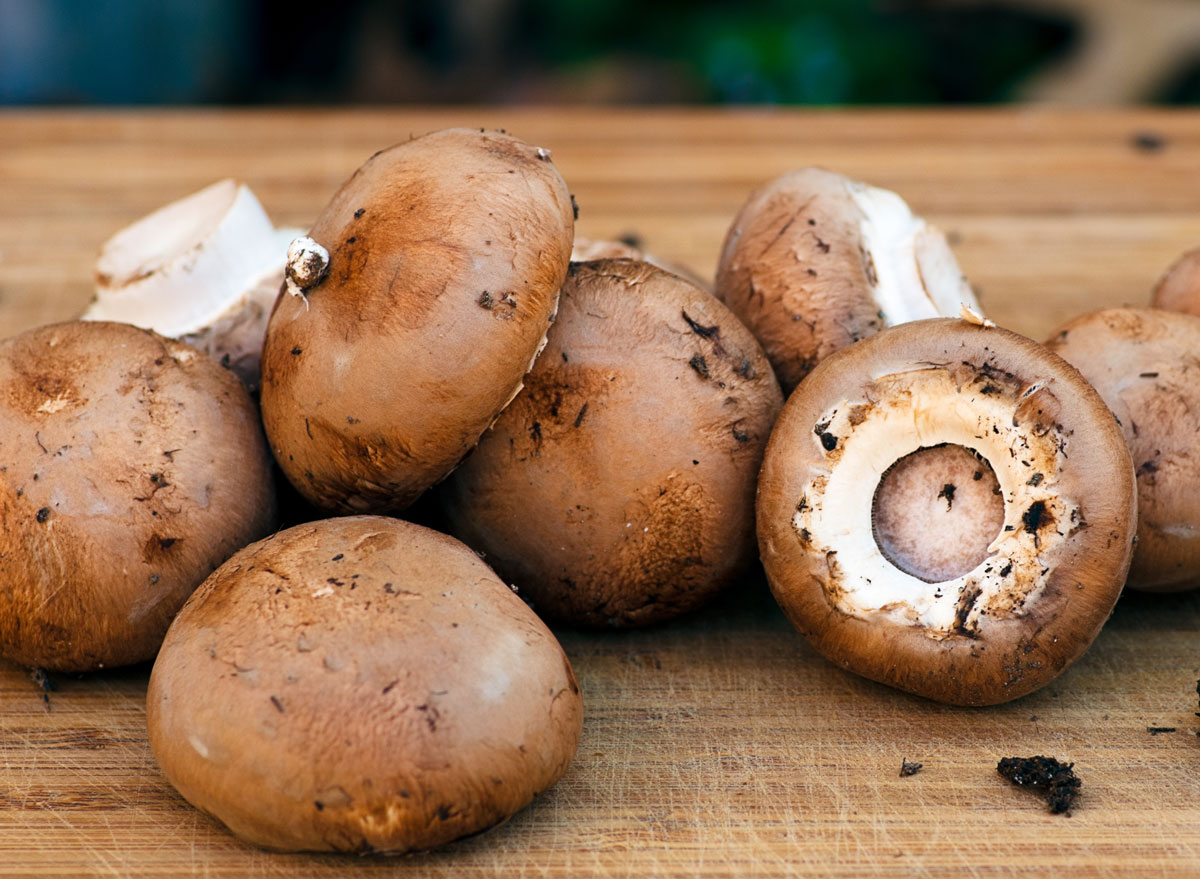
Vitamin D content (per 1 cup): 1,010 IUs (168% DV)
It sounds odd, but hear us out: when mushrooms are exposed to sunlight or a UV lamp (ultraviolet light), they can generate high levels of vitamin D2, according to a study published in the journal Nutrients. In fact, this method results in mushrooms with vitamin D levels higher than most vitamin D-containing foods.
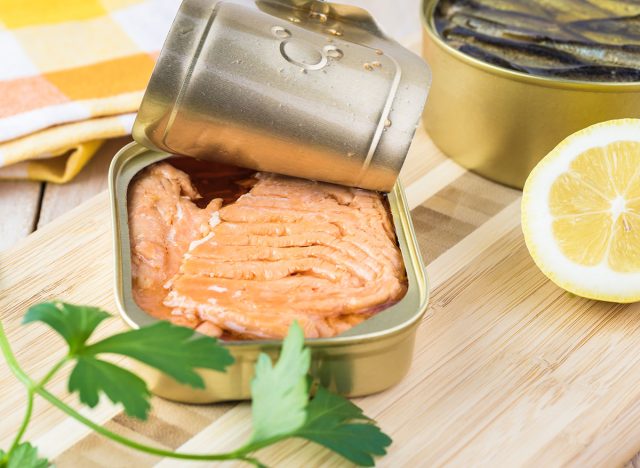
Vitamin D content (per 3 ounces, canned): 730 IUs (121% DV)
Sockeye salmon is a type of salmon specific to the northern Pacific Ocean, and this fish happens to have some of the highest levels of vitamin D. Although both farmed and wild salmon contain high levels of vitamin D, wild salmon often contains more because of the crustaceans it feeds on.
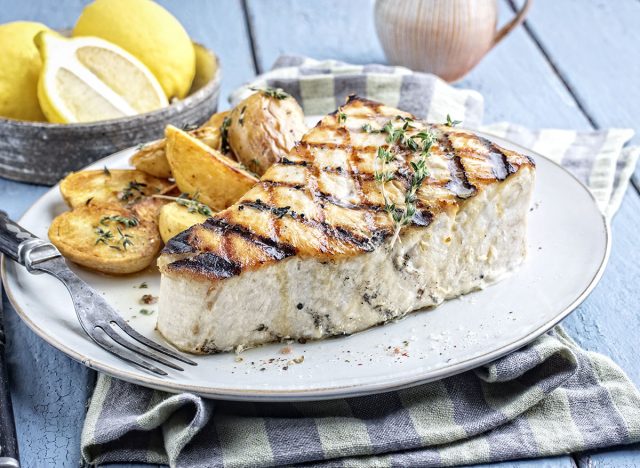
Vitamin D content (per 3-ounce filet): 566 IUs (94% DV)
The perfect choice for people who like fish but don’t love a super “fishy” taste or smell, swordfish is a mild white fish that will give you almost an entire day’s worth of vitamin D in one 3-ounce filet. Bake or grill up a filet for yourself for those brain and bone health benefits.
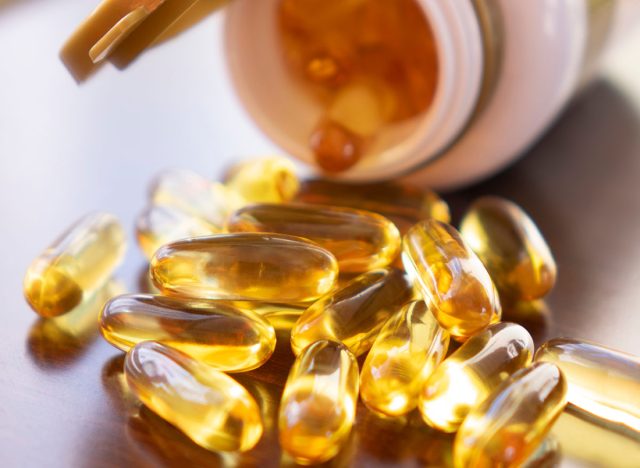
Vitamin D content (per 1 tsp): 450 IUs (75% DV)
Fish oil is taken from the tissues of fatty fish, and it’s a way to reap the benefits of omega-3 fatty acids found in fish without actually eating the fish. According to the Mayo Clinic, fish oil has been found to help reduce pain in arthritis patients, manage blood pressure and cholesterol management, and lower the risk of heart disease. Along with these benefits, you’re also getting around 75% of your daily value of vitamin D with just one teaspoon of fish oil.
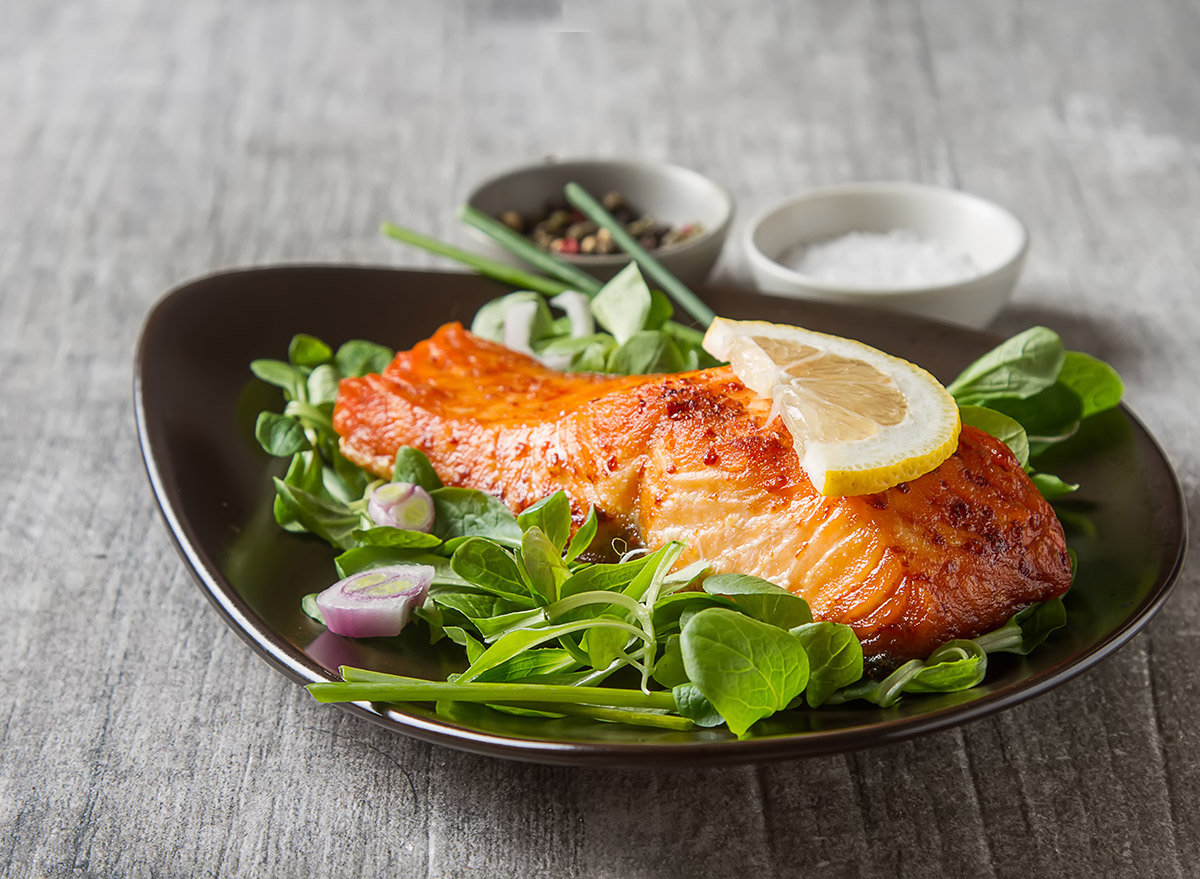
Vitamin D content (per 3-ounce farmed Atlantic salmon filet): 447 IUs (75% DV)
As noted, farmed salmon often has less vitamin D than wild, but in a 3-ounce filet of Atlantic farmed salmon, you’ll still get 75% of your daily value. Bake a filet and pair it with a salad or some of your favorite vegetables, or serve it over a bed of rice with spicy mayo for a delicious, vitamin D-packed meal.
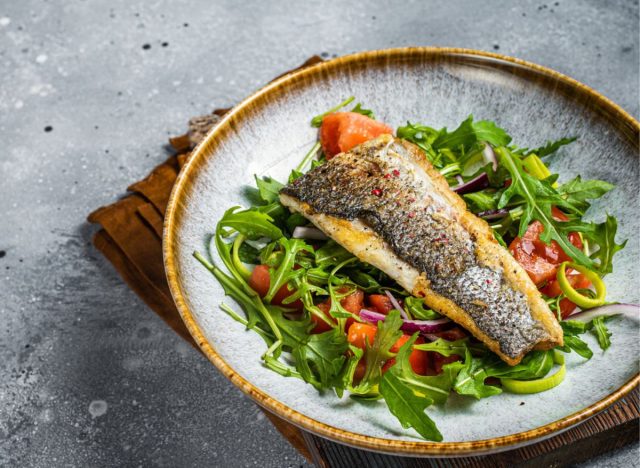
Vitamin D content (per 3-ounce raw filet): 192 IUs (32% DV)
Whether you fry it up in the skillet, bake it, or throw it on the grill, eating a serving of sea bass will provide you with 192 IUs of vitamin D, which is 32% of your daily value. This fish is mild and flaky, and it works well with a variety of flavor profiles. To enjoy this vitamin D boost, grab some aluminum foil and try our Sea Bass Packet recipe.
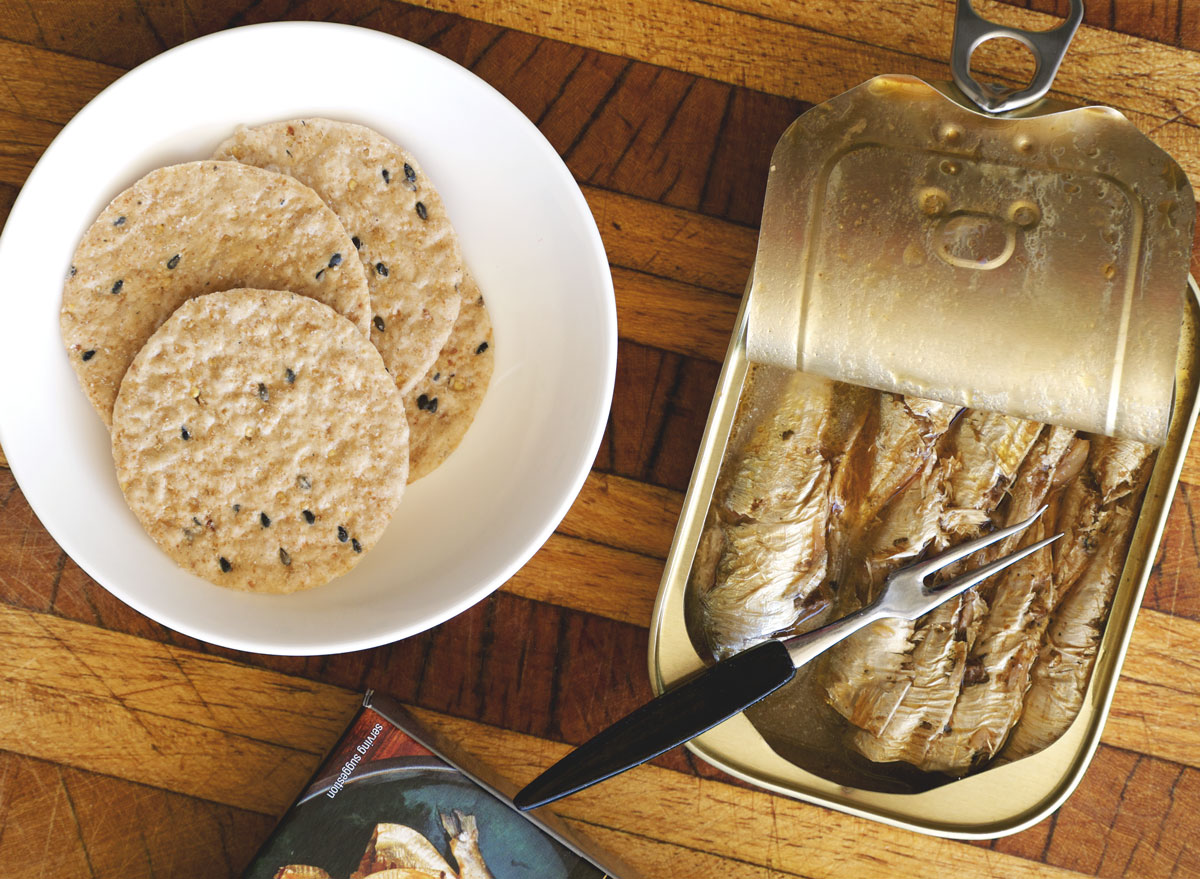
Vitamin D content (per can): 288 IUs (48% DV)
Canned sardines are an easy and affordable way to get a boost of vitamin D for your bones and brain. Similar to canned tuna, you can eat the sardines right out of the can, you can put them on crackers, or make a sardine salad sandwich with mayo, scallions, and your preferred spices. For help on which sardines to buy, try one of these canned fish brands.
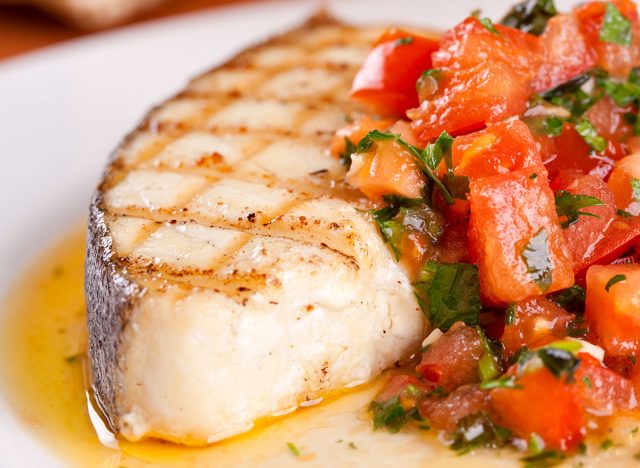
Vitamin D content (per 3-ounce filet): 196 IUs (33% DV)
Like many of the fish on our list, halibut is another mild, flaky white fish that works well in a number of different cuisines and recipes. Both Atlantic and Pacific halibut are high in vitamin D, and with a 3-ounce serving you’re getting about a third of your daily value of this crucial vitamin. Buy it fresh or frozen, and enjoy the delicious health benefits of halibut.
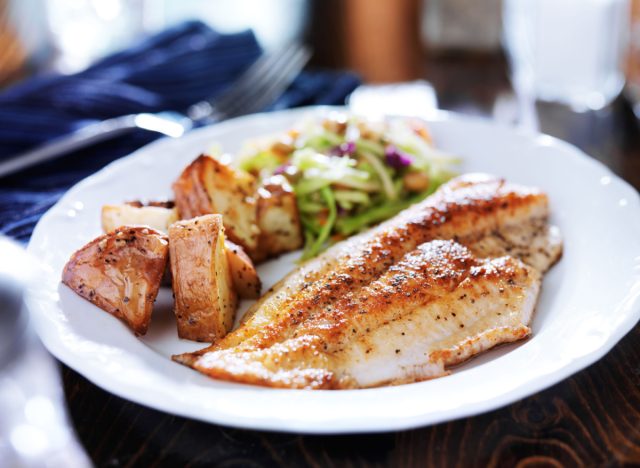
Vitamin D content (per filet): 130 IUs (22% DV)
Tilapia is a mild fish perfect for those who want an accessible seafood option that will soak up the flavors of the dish it’s in. With 22% of your daily value of vitamin D, this fish is also helpful in reaching your nutrient goals. Try our Blackened Tilapia with Garlic Lime Butter or our Fish Tacos for an easy way to cook this fish.
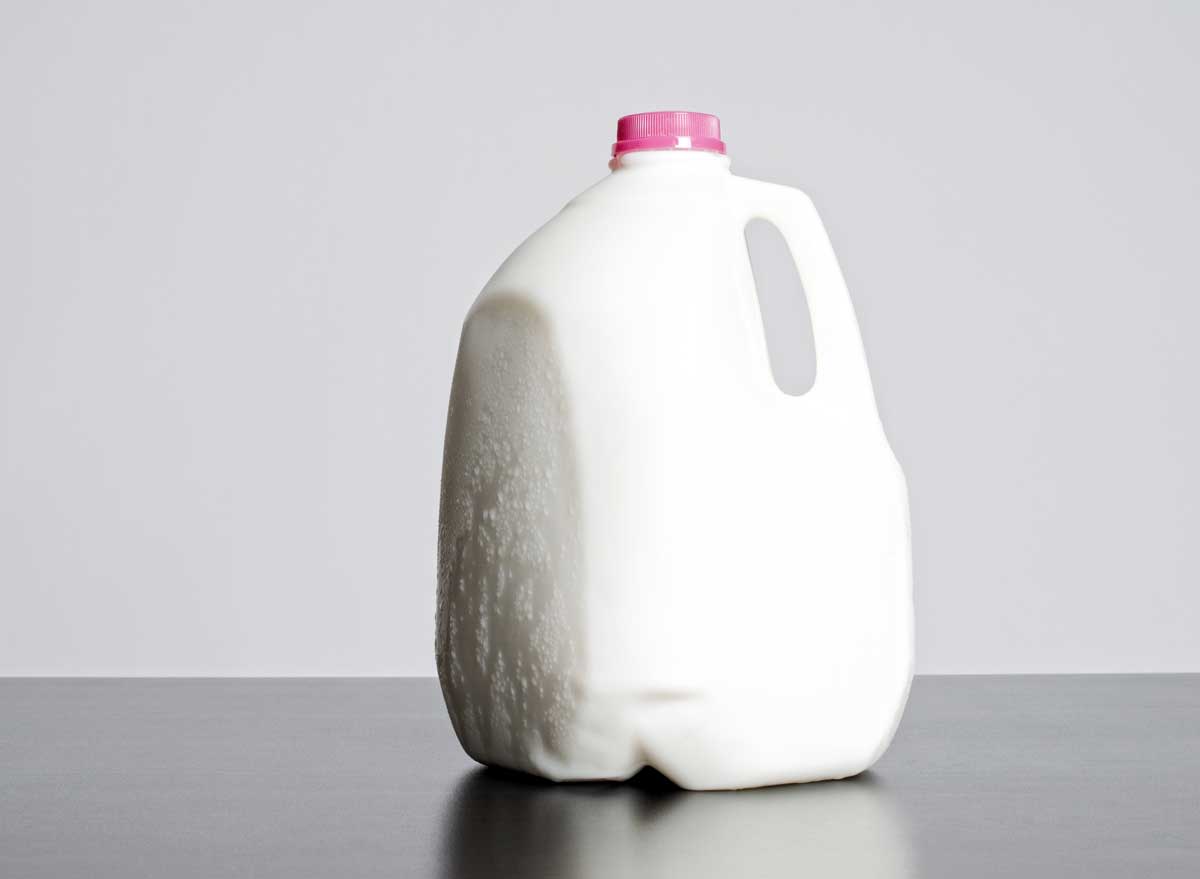
Vitamin D content (per 1 cup): 120 IUs (20% DV)
Regular cow’s milk contains trace amounts of vitamin D, but it is common for brands to fortify their milk by adding different vitamins and minerals. It’s easy to find vitamin D-fortified milk at the store, and buying this will ensure that you can get around a fifth of your daily value by drinking a cup of milk or pouring it over your morning cereal.
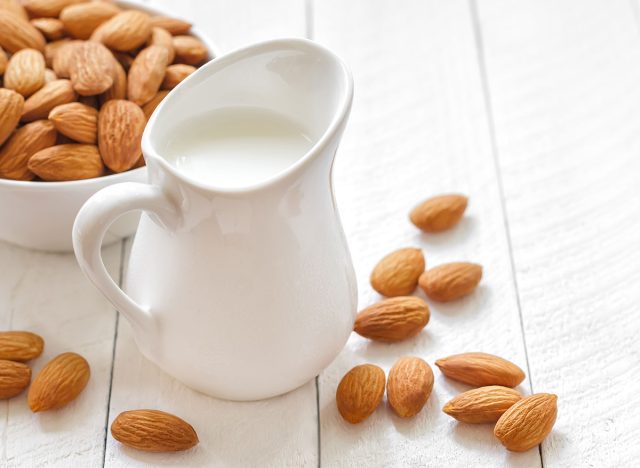
Vitamin D content (per 1 cup of soy milk): 114 IUs (19% DV)
You normally won’t find vitamin D in regular, unfortified plant-based milks, but if you look for vitamin D-fortified almond or soy milk at the store, you’ll have an easy way to get this important vitamin without consuming any dairy. Add it to your cereal or your coffee, or just drink it plain, but either way, you can get close to 20% of your daily value of vitamin D.
Vitamin D content (per 1 cup): 105 IUs (18% DV)
On its own, orange juice lacks vitamin D, but it’s common to see this fruit juice on store shelves fortified with vitamin D. If you buy vitamin-D fortified orange juice, you’ll be sipping on the brain and bone health benefits of vitamin D, while also enjoying the powerful antioxidant and immunity benefits of vitamin C.
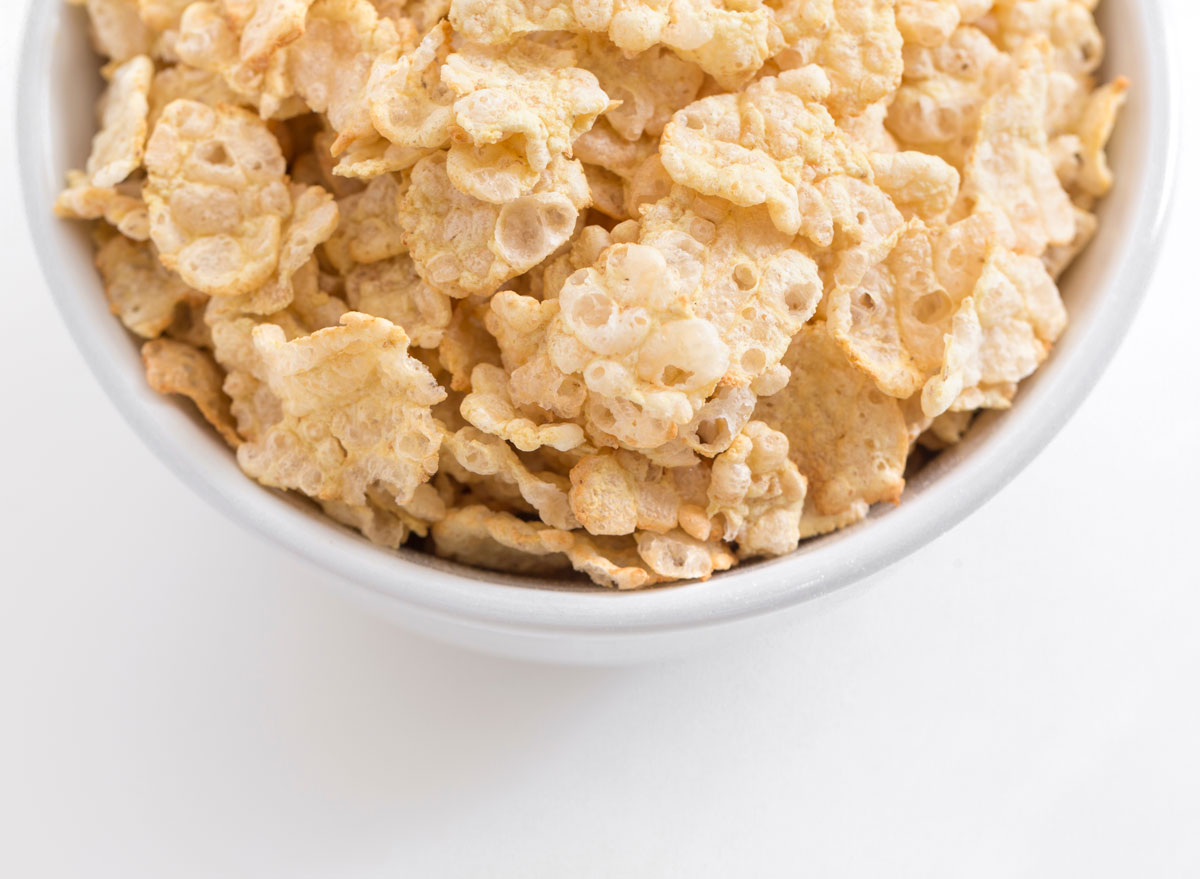
Vitamin D content (per 1 to 1 1/4-cup serving): 2 mcg (10% DV)
As noted, you can find many vitamin D-fortified drinks on the market like orange juice, cow’s milk, and plant-based milk, but did you know you can also buy fortified breakfast cereal? Not all cereals are fortified with vitamin D, so you’ll have to read the label, but some like Total, Rice Krispies, Cocoa PEBBLES, and Honeycomb can serve up between 10% and 15% of your daily value.
Want to pack in as much vitamin D as you can in your breakfast meal? Buy fortified cereal and top with fortified milk—it’s that easy!
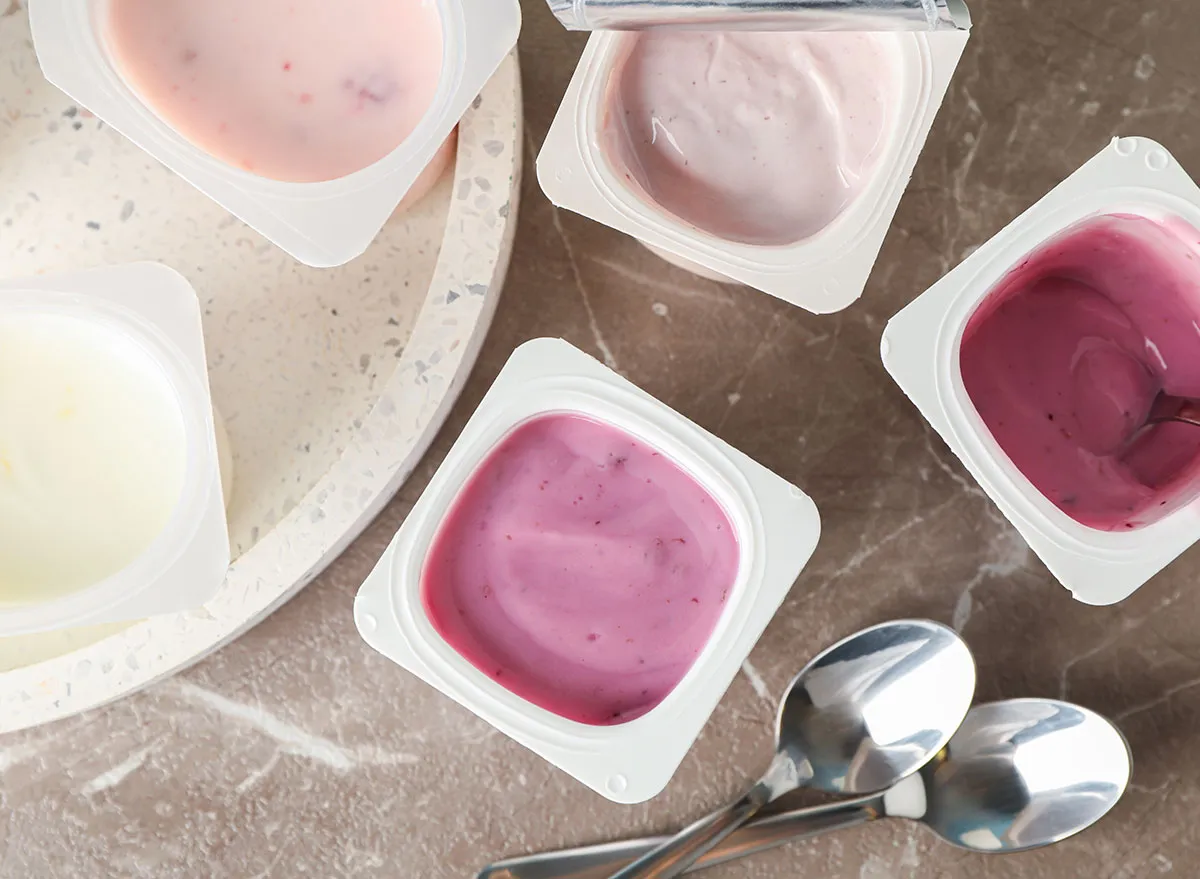
Vitamin D content (per 6 ounces): 80 IUs (13% DV)
Yogurt is packed full of beneficial nutrients like protein and calcium, and when you buy fortified yogurt, you’ll get a boost of vitamin D, too. For the healthiest option, look for yogurt varieties that are lower in added sugar and fat, and higher in protein.
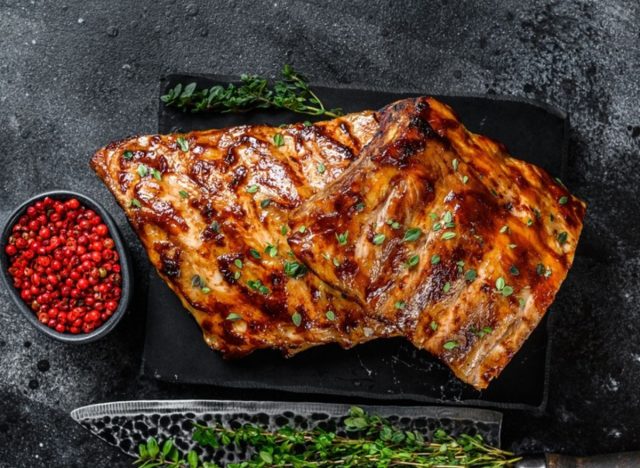
Vitamin D content (per 3 ounces): 88 IUs (15% DV)
When you’re craving juicy, tender pork ribs, what is the difference between spare and baby back? Spare ribs are cut from the bottom of the rib cage and baby back ribs are cut from the top, and spare ribs tend to be bigger. Another difference? Spare ribs contain higher levels of vitamin D per serving (88 IUs) than baby back (26 IUs).
If you’re used to cooking baby back ribs, be prepared for the cooking process of spare ribs to take a bit longer, since this is a larger cut of meat.
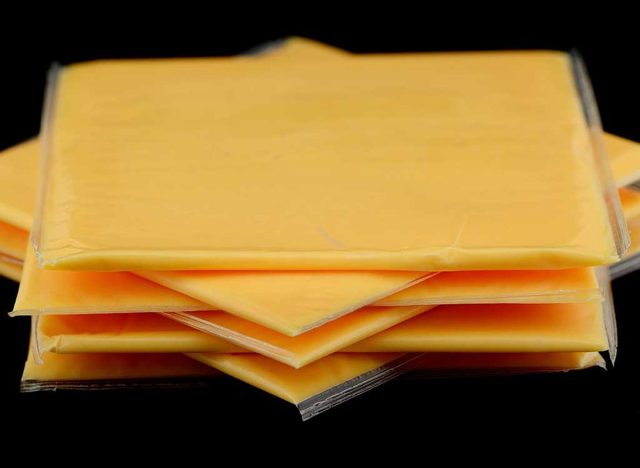
Vitamin D content (per 1 slice): 84 IUs (14% DV)
American cheese is a processed product that contains a combination of multiple types of cheeses and is known for its mild flavor and how well it melts, which is why it’s often used for hamburgers or grilled cheeses.
This type of cheese often gets a bad rap because it often contains preservatives like sodium phosphate, which aren’t usually found in other cheeses, but American cheese also contains a handful of helpful vitamins and nutrients. For instance, in just one slice you’ll get almost 15% of your daily value of vitamin D.
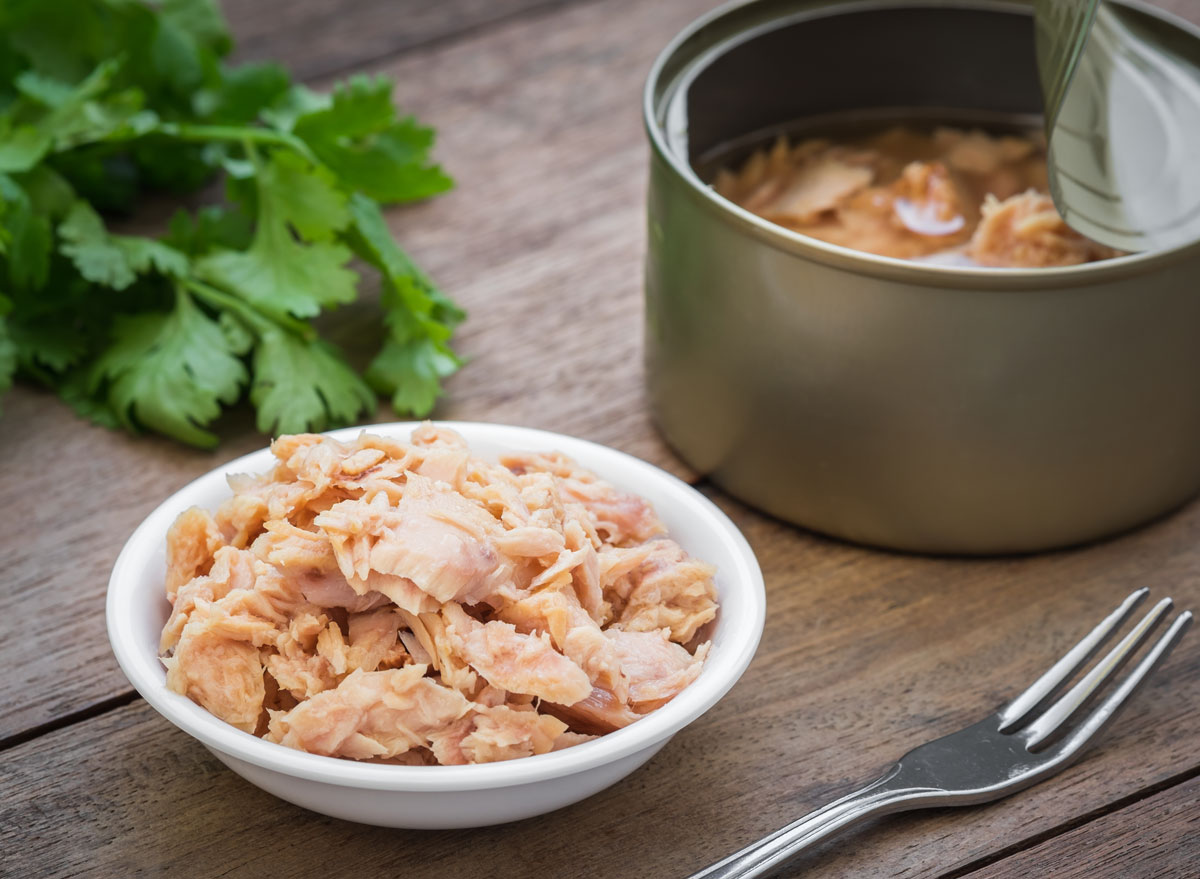
Vitamin D content (per 1 can): 72 IUs (12% DV)
You may not get as much vitamin D in a can of tuna as you would in other canned fish like salmon or sardines, but if it’s tuna you’re craving, you can still enjoy 12% of your daily value of vitamin D. For some inspiration on how to eat canned tuna other than just adding it to some crackers, try our easy Italian Tuna Melt.

Vitamin D content (per 3 ounces): 64 IUs (11% DV)
Cured ham is made by preserving the meat with things like sugar, salt, and nitrates, and processed red meats like this are best consumed in moderation because of their link to cardiovascular disease and various cancers.
However, when you do enjoy meats like cured ham on occasion—maybe for your next charcuterie and wine night—one benefit is that you’ll get a small boost of vitamin D with around 11% of your daily value.
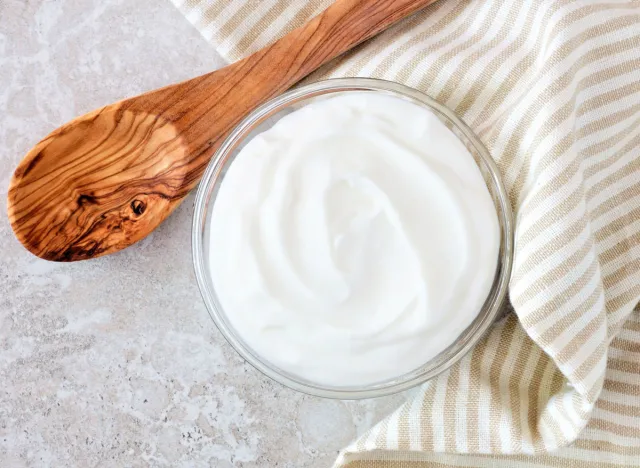
Vitamin D content (per 5.3-ounce container): 53 IUs (9% DV)
We’ve already discussed the benefits of buying yogurt that is fortified with vitamin D, but if you’re unable to find it at the store or are more interested in a higher-protein option, Greek yogurt can give you a boost of vitamin D as well. It may not seem like much with only about 9% of your daily value per container, but you can easily raise your levels by adding in some fortified breakfast cereal.
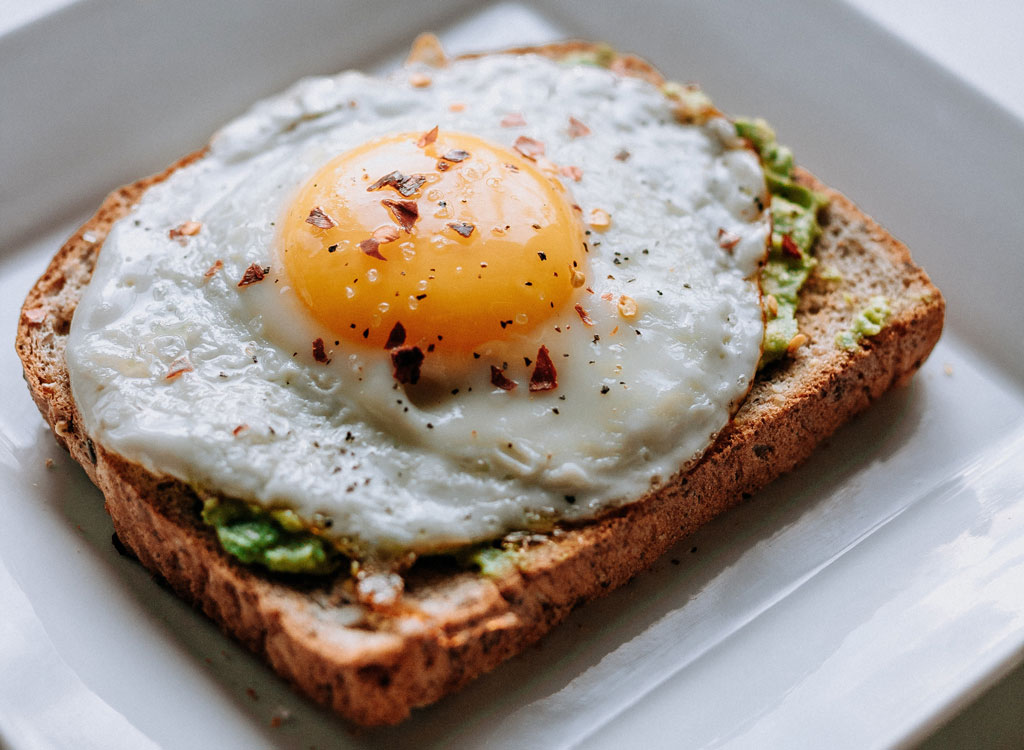
Vitamin D content (per 1 large egg): 50 IUs (8% DV)
Eggs are most known for providing protein and choline—a nutrient needed for metabolism, cognitive function, and healthy muscle tissue, but eggs are also considered a vitamin D food. In just one egg you’ll get 8% of your daily value, but you can easily double that at breakfast and be on your way to better immune and bone health.
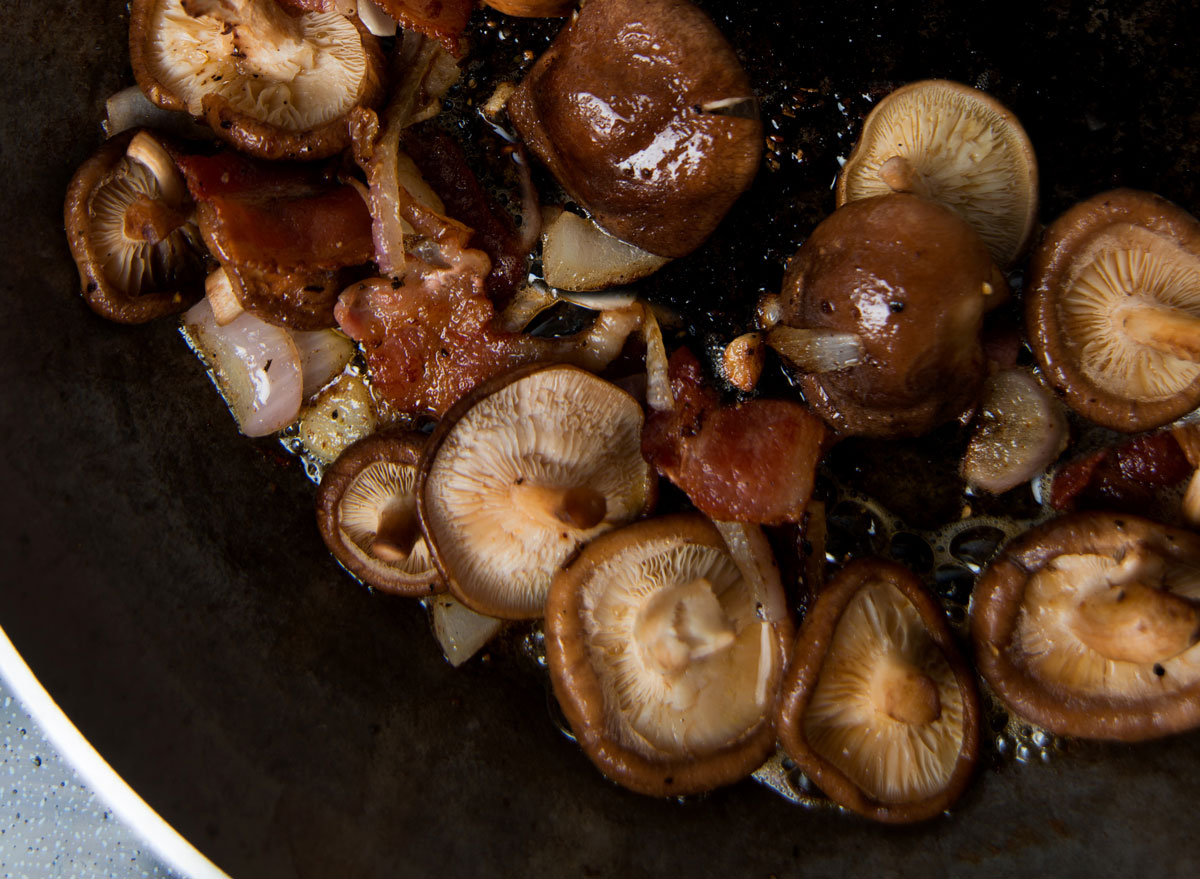
Vitamin D content (per cup): 41 IUs (7% DV)
We noted earlier that white mushrooms (especially when exposed to ultraviolet light) can give you a ton of vitamin D, but if shiitake mushrooms are more your thing, you can eat them for a smaller dose of this vitamin. For a delicious way to enjoy these mushrooms as the weather gets colder, we recommend trying our Chicken Ramen with Shiitake Mushrooms and Spinach.
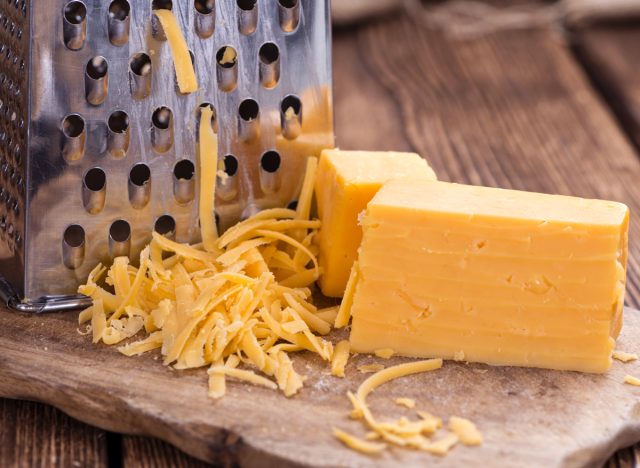
Vitamin D content (per 1 cup): 32 IUs (5% DV)
It may not have as much as American cheese, but cheddar cheese still contains a small amount of vitamin D, and one cup will start you out with around 5% of your daily value. Another benefit of enjoying this type of cheese? You’ll get a hefty dose of protein and calcium in every bite.
Kindly read more from the website homepage
